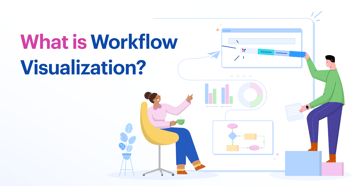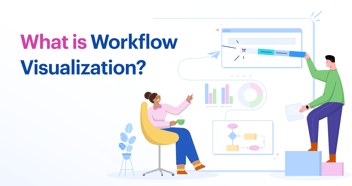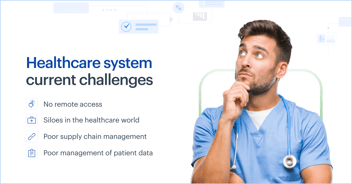Creating and developing apps requires time and money – resources you can better spend providing stellar patient care. However, the healthcare industry needs rapid digital transformation to continuously meet increasing patient demands.
Low-code, no-code platforms provide a better alternative for healthcare organizations to meet the growing demands of digitization. These platforms use a drag-and-drop interface, so end users with no traditional coding background can quickly create the applications they need to support their daily operations.
With this technology, you can build complementary enterprise applications and workflows without wasting time on complex manual coding processes. This makes building health-tech applications cost-effective, efficient, and profitable.
How to reduce costs in healthcare with low-code no-code platforms
Low-code, no-code solutions help you expand the capabilities of your legacy systems without making hefty investments. Here’s how these platforms help you save costs:
1. Automating tasks
Automating and streamlining manual processes can significantly save time and costs in the healthcare industry.
For instance, automating appointment scheduling can allow patients to schedule appointments on their own 24/7. It's also possible to send automated reminders to patients right before their appointments. This not only decreases scheduling conflicts, no-shows, and appointment delays but also lets healthcare staff move away from menial tasks and focus on more complex parts of their responsibilities.
Similarly, automating insurance claim processes can significantly decrease the time taken to process claims and decrease costs by 30%.
2. Reducing IT dependency
Low-code and no-code solutions empower citizen developers, such as healthcare professionals, to create their own applications without relying heavily on IT departments. This reduces dependency on IT staff and lower costs associated with hiring and maintaining a dedicated development team.
For instance, citizen developers in the healthcare industry can create no-code apps for electronic health records, seamless patient management, and more. This approach allows healthcare organizations to shift their focus from developing code to providing more value to patients by bringing technology closer to the end user.
3. Improving efficiency
By decreasing the amount of human-facing work, automating repetitive tasks, and digitizing internal processes, automation can help free up the time of healthcare staff and improve efficiency.
Staff members previously burdened with manual administrative tasks can now focus more on patient care and higher-value activities.
4. Scalability and flexibility
Healthcare organizations often require customized software solutions to address the unique challenges of dealing with vast amounts of data and strict compliance regulations. Traditional software development is time-consuming and expensive, especially when scaling applications to accommodate growing needs.
Low-code and no-code platforms offer flexibility and scalability, allowing you to adapt and modify applications as your needs evolve. This adaptability eliminates the need for expensive and lengthy development cycles, thus reducing costs associated with software updates and scaling.
Healthcare organizations using low-code no-code solutions
The following organizations show how low-code no-code solutions streamlined their operations, reduced costs, and saved money.
Royal Berkshire NHS Foundation
The Royal Berkshire NHS Foundation receives over 125,000 referrals annually across 40 specialist areas. The organization used to process these referrals manually, leading to a huge backlog and inaccurate data transfers.
Using a low-code, no-code solution, the organization automated its patient referrals process and helped consultants instantly view patient information and history. Referrals were processed 6x faster, saving over 15,000 hours yearly.
With this automated solution, Royal Berkshire improved the accuracy of patient referrals and provided better consultations for its patients.
Geisinger Health System
Pennsylvania-based healthcare provider, Geisinger, serves over 3 million patients and employs 26,500 healthcare staff. When the pandemic struck, the organization struggled to rapidly reassign employees and deploy them to areas where they were most needed.
With the help of a low-code, no-code application, the organization automated employee reassignment and streamlined its workflow. From working with a tedious Excel spreadsheet, they now rely on an automated solution that helps fill critical gaps when it matters the most.
Vibrant Emotional Health
Vibrant is a mental health service in New York City that runs several programs to advocate for mental health well-being. With more than 200 employees across different locations, managing requests and approvals took a long time and was prone to errors.
Executives needed to be physically present to approve requests, while existing forms were static and lacked reporting capabilities. Scaling their existing systems also proved to be costly.
Using Kissflow, Vibrant empowered employees to create the needed apps and automate existing processes. They scaled their systems without incurring huge costs or relying on complex development processes.
The future of low-code no-code solutions in healthcare
The healthcare industry is rapidly evolving, with new technologies and requirements emerging constantly. Investing in low-code and no-code platforms is essential for strategic healthcare cost management.
These solutions improve efficiency while reducing costs associated with traditional application development. This helps you maximize your investment while keeping your organization profitable.
By turning healthcare professionals into citizen developers, low-code and no-code platforms democratize application development.
Anyone with varying technical backgrounds can create software solutions. This includes subject matter experts with deep domain knowledge but little extensive coding expertise.
Providing sustainable, high-quality healthcare hinges on adopting technological innovations that solve your organization’s unique challenges and priorities.
Start transforming your healthcare organization with Kissflow, and experience streamlined processes with significant healthcare cost savings.












